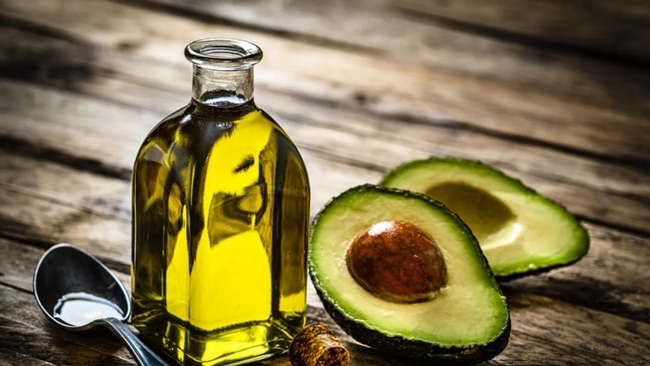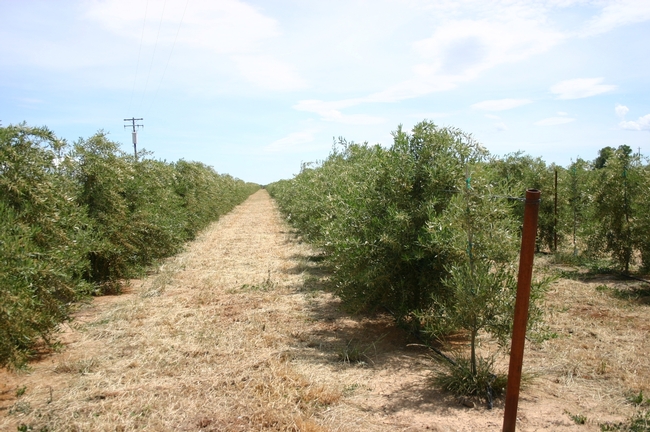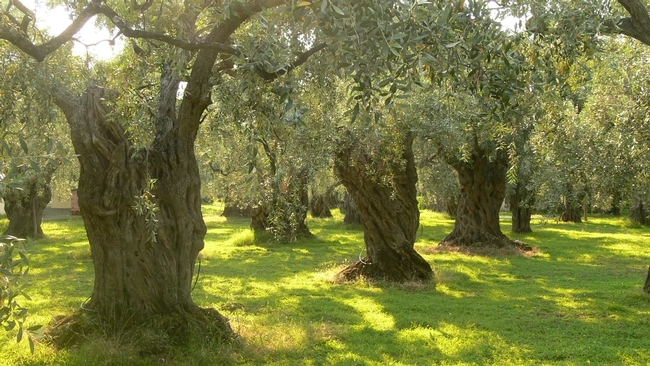
Posts Tagged: oil
Nearly 70% of private label avocado oil rancid or mixed with other oils
Researchers identify key markers to help professional retail buyers choose authentic products
Avocado oil has become a popular choice for many people in recent years because of its heart-healthy benefits and versatility in cooking. However, not all avocado oil products on store shelves are created equal. Some products are labeled as “pure” avocado oil when they contain other oils or additives. No enforceable standards defining the chemical and physical characteristics of avocado oil exist yet.
Researchers at the University of California, Davis, analyzed samples of 36 private label avocado oil products and graded them based on quality and purity. Private label products are made by a third-party processor and sold under a grocery store or retailer brand label. Their findings, published in the journal Food Control, show that 31% of the samples tested were pure, and 36% were of advertised quality. Quality refers to whether the oil is fresh or has gone bad due to aging, heat or light exposure. For purity, researchers measured fatty acids, sterols and other components that differentiate avocado oil from other oils.
The study included oils purchased from 19 retailers in the U.S. and Canada with various price points. They found that lower-priced oils were more likely to be tainted with other oils.
“We found that low-cost products indicate a higher probability for adulteration, but high cost didn't guarantee purity or quality,” said Selina Wang, associate professor of Cooperative Extension in the Department of Food Science and Technology. She and Hilary Green, a postdoctoral researcher at UC Davis, co-authored the paper.
Researchers also identified certain chemical markers in avocado oil that professional retail buyers can use to make more informed decisions when it comes to choosing suppliers. This way, consumers can feel confident about the products they buy.
This is the second comprehensive study conducted by UC Davis researchers on the quality of avocado oil sold in the U.S. The first study released in 2020 found that many of the test samples were of poor quality, mislabeled or adulterated with other oils.
“This study demonstrates that although progress is being made in standard development since our first market study in 2020, there are still issues with purity in avocado oil and these issues extend significantly into private label oils,” Wang said.
Avocado oil standards
Since the release of the first UC Davis study, Wang said there's been a coordinated effort by researchers, industry leaders and government agencies to establish enforceable standards. The Avocado Oil Expert Group was formed in collaboration with the American Oil Chemists' Society to discuss potential standards and future research projects.
Wang's research group has been studying how natural factors like different types of avocados, harvest times, geographic origins and processing methods could affect the chemical composition of avocado oil. They want to create standards that will accommodate natural variations while detecting any adulterations.
Wang hopes that the study's findings will contribute to the establishment of standards that benefit both consumers and avocado oil producers who want to compete in a fair market.
“I'm very optimistic for the future of the avocado oil industry,” Wang said. “It's a high-value product with high consumer demand, similar to what I saw with olive oil 10 years ago. Olive oil quality and purity have improved significantly, which is where I see avocado oil going, if we can establish fair standards and eliminate fraudulent products.”
The Achemon Sphinx Moth: A Lovely Beast, Indeed
It is indeed a “lovely beast,” as lepidopterist Art Shapiro, UC Davis...
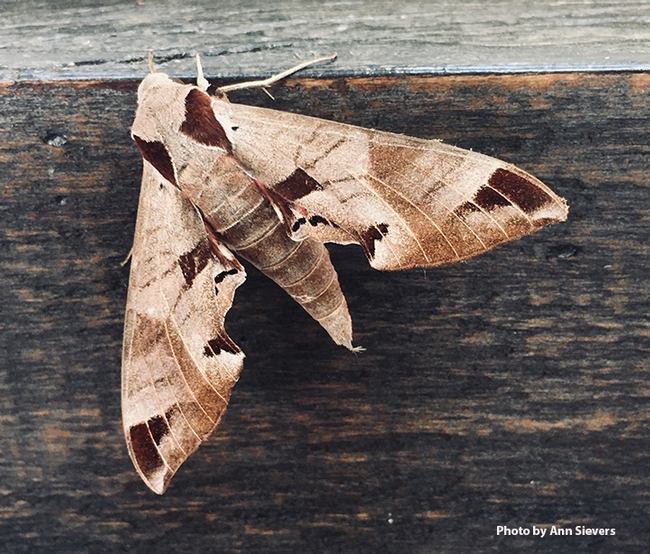
Eumorpha achemon, the Achemon Sphinx, is a "lovely beast," says UC Davis distinguished professor Art Shapiro. Ann Sievers, owner, grower and miller Il Fiorello Olive Oil Co., recently found this one the wall of her patio. (Photo by Ann Sievers)
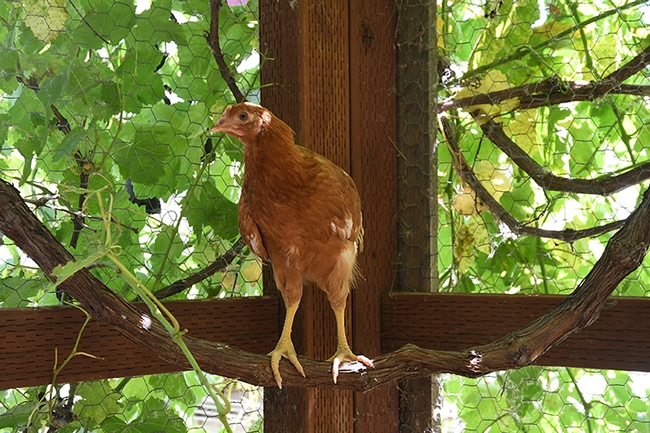
What's for lunch? A chicken in one of Ann Sievers' flocks at Il Fiorello Olive Oil Co., eyes the photographer. Chickens eagerly eat lots of bugs--if they're available. The larvae of the Achemon Sphinx moth feed on grape leaves. (Photo by Kathy Keatley Garvey)
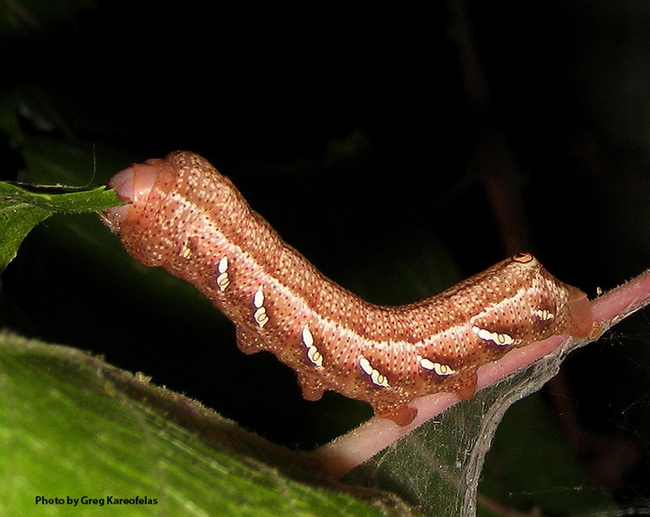
Naturalist-photographer Greg Kareofelas took this image of an Eumorpha achemon larva in his yard in Davis several years ago. It was feeding on native grape, Vitus californica. (Photo by Greg Kareofelas)
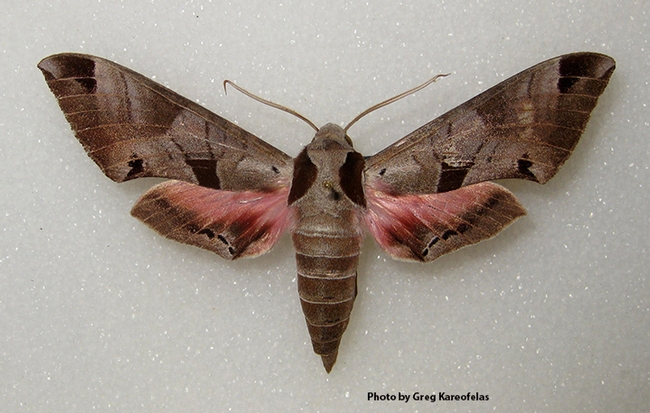
An adult Eumorpha achemon, photographed by naturalist-photographer Greg Kareofelas in his yard in Davis several years ago. It was feeding on native grape, Vitus californica. (Photo by Greg Kareofelas)
Food bloggers see innovative olive oil production system in Capay Valley

The writers heard about innovations in olive oil production that have allowed California producers to minimize labor costs and maximize yield and quality by establishing super-high-density orchards. Farm manager Joe Armstrong led a farm tour, explaining amendments that had to be added to the soil before planting, the configuration of the trees in hedgerows and an irrigation system that permits application of water to the trees exactly when it is needed.
A graduate of California Polytechnic State University, San Luis Obispo, Armstrong said he choose a career in agriculture precisely because of the new technologies that make the field more efficient and productive.
"That's why I have a passion for farming," Armstrong said.
Ranch owner Chris Steele, who has farmed in Capay Valley his entire life, recognized how such innovations are brought to the farm.
"We couldn't do this without the UC system," he said.
UC Cooperative Extension advisors and specialists have worked alongside farmers to adapt the new super-high-density orchard systems. The idea was conceived in Spain and introduced into California in the 1990s. Successful use of high-density olive farming requires careful variety selection; finessed pruning, fertilization and irrigation practices; and understanding the cost-and-return for adept decision-making. This month, UCCE scientists released a new cost-and-return study specifically for farmers to use when planning new olive orchards under the super-high-density planting configuration.
Utility of Fall Applied Lime Sulfur in Reducing Incidence of Redberry Mite in Blackberry
As readers of this space already know, the utility of fall applied lime sulfur for controlling redberry mites in blackberries has been questioned. Previous collaborative work has shown that 3-4 applications of Golden Pest Spray oil at a dilution of 1.2 – 2% volume to volume applied at the 50% green fruit stage in the spring is the most effective way to control this pest in blackberry.
This past year, the authors partnered to test the thesis that fall applied lime sulfur, with and without flowable sulfur, would not have an effect on total redberry mite infestation later on in the season. The trial consisted of each treatment (no winter application, 15 gal/A lime sulfur applied twice, and 15 gal/A lime sulfur + 10 lb/A flowable sulfur applied twice) being replicated four times. In turn, each treatment replicate plot was composed of three side by side 250 foot long tunnels, with each tunnel covering three rows of blackberries (meaning each treatment replicate had nine rows of blackberries).
First application of 15 gal of lime sulfur and 15 gal of lime sulfur + 10 lbs wettable sulfur was made November 18, 2013 and the second application of the same was made January 17, 2014. In the spring, two applications each were made of of wettable sulfur (12 lbs per acre) and Golden Pest Spray oil (1.5% to 2%). All other crop and pest management procedures were made as necessary to the maintenance of the crop.
Starting June 29 and continuing weekly through the end of July for a total of six evaluations, total number of marketable fruit and redberry mite fruit were counted in a four foot long section of each three tunnel replicate plot. Statistical evaluation was done as a percentage redberry mite infested fruit compared to total amount of fruit.
As the reader can see from the data presentation below, lime sulfur used either alone or lime sulfur applied with sulfur had no effect on redberry mite incidence in the field in this study. While it is to be noted that this is a single trial run in a drought year, it nevertheless adds a good data set to the consideration of the question of the utility of fall sulfur applications for redberry mite.
|
Evaluation date |
%RBM affected fruit 6-29-2014 |
%RBM affected fruit 7-3-2014 |
%RBM affected fruit 7-10-2014 |
%RBM affected fruit 7-17-2014 |
%RBM affected fruit 7-24-2014 |
%RBM affected fruit 7-31-2014 |
|
No Winter Treatment |
2.66 |
2.66 |
3.32 |
5.01 |
12.50 |
11.99 |
|
15 gal/acre lime sulfur |
1.70 |
2.81 |
3.25 |
7.23 |
9.44 |
16.93 |
|
15 gal/acre lime sulfur + 10 lb/acre flowable sulfur |
1.94 |
3.20 |
3.73 |
7.69 |
11.82 |
13.06 |
None of the means of the percentages of redberry mite infested fruit differ significantly at the 5% level.
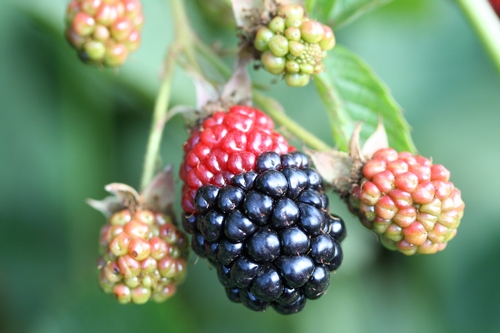
Redberry mite affected blackberry fruit. Note clear demarcation between affected, unripe druplets and those which are not.
Students' olive-oil fraud buster wins international prize

The award was presented to the Aggie inventors during the finals of the three-day global iGEM (International Genetically Engineered Machines) competition in Boston. The competition, this year featuring 245 teams from Asia, Europe, Latin America and North America, challenges student teams to design and build biological systems or machines and present their inventions in the international competition.
The students had spent several months designing and building the palm-sized biosensor, which they dubbed OliView. The biosensor is equipped to quickly and easily evaluate the chemical profile of oil, providing producers, distributors, retailers and ultimately consumers with an effective, inexpensive way to ensure olive oil quality.
Verifying olive oil quality is a concern for consumers – many of whom are willing to pay higher prices for the health benefits and flavor of true, extra-virgin olive oil. And honest olive oil producers want to prevent other producers from passing off sub-par olive oil as the real deal, while retailers, distributors and producers want a quick, easy way to ensure olive oil quality.
In addition helping detect fraudulent olive oil, the students' new biosensor will also monitor for good oil that may have gone rancid with age.
The team of undergraduate students included Lucas Murray, Brian Tamsut, James Lucas, Sarah Ritz, Aaron Cohen and Simon Staley, with Yeonju Song serving as the “shadow” or alternate team member. You can tune into Aaron Cohen's recent Nov. 6 Science Friday interview during a discussion of synthetic biology.
The full story and a brief video about the new olive-oil biosensor and this stellar team of young inventors are available at: http://news.ucdavis.edu/search/news_detail.lasso?id=11076.
Reports on olive-oil quality are available at the web site of the UC Davis Olive Center at: http://olivecenter.ucdavis.edu/research/reports.

